by Mathew Barlow, Professor of Climate Science
Blocks and jet streaks appear to be fairly different phenomena. However, in a very idealized sense, they can be thought of two versions of the same configuration: two oppositely-rotating vortices embedded in a westerly flow.
Two opposite vortices, no background flow
Two counter-rotating vortices that are nearby will each advect the other, resulting in joint movement. (For more discussion on vortex interaction, please see https://storm.uml.edu/~metweb/Blog/?p=487.)
A negative (anticyclonic) vortex north of a positive (cyclonic) vortex results in westward movement. In the atmosphere, this would correspond to a high pressure system north of a low pressure system. In the animation below, vorticity is shaded: blue for negative vorticity and red for positive vorticity. (Northern Hemisphere case shown.)
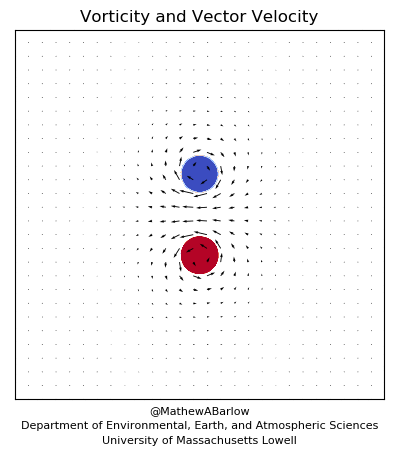
A positive vortex north of a negative vortex results in eastward movement. This corresponds to a low north of a high.
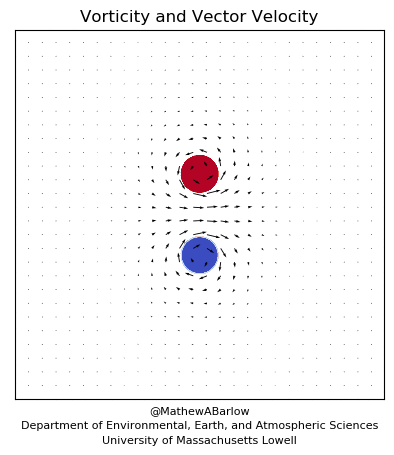
Adding a uniform westerly flow
If these two cases are embedded in a westerly flow, the first case (negative vorticity north of positive) opposes the flow resulting in a block, and the second case (positive north of negative) moves faster than the flow resulting in a jet streak.
Here’s the blocking case. This type of blocking pattern is referred to as a “Rex block,” after Rex (1950). The image is animated but little change is seen as the joint motion of the two vortices exactly balances the background flow in the case shown.

And here’s the jet streak case. Note the localized area of maximum zonal wind located between the two vortices – that area of maximum wind speed is the “jet streak” and moves faster than the westerlies it’s embedded in.
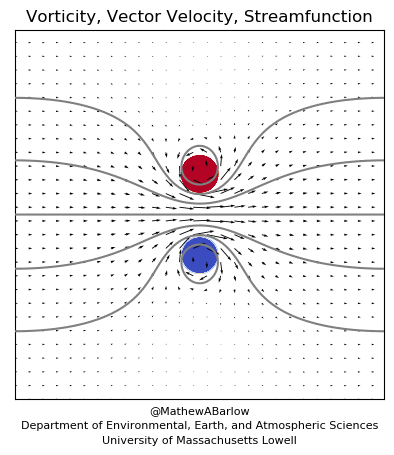
Schematics and context
For more context in the blocking case, here’s a schematic from MetEd:
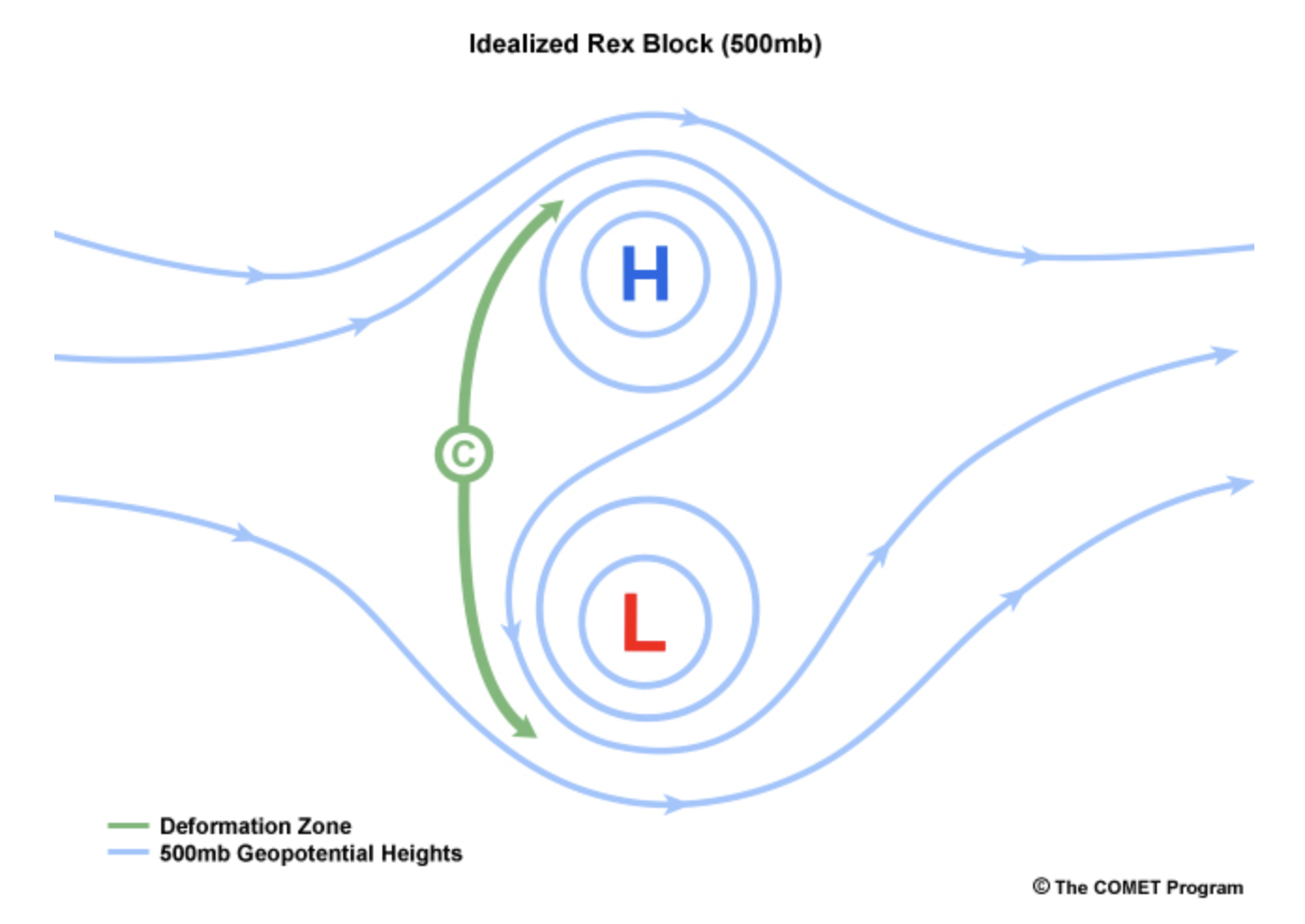
https://www.meted.ucar.edu/norlat/sat_features/blocking_patterns/rex_block.htm
A very introductory discussion of the Rex block flow pattern can also be found at the NWS jetstream site: https://www.weather.gov/jetstream/basic
For more context on the jet streak case, here’s a schematic taken from Fig. 3c of a classic paper on jet streaks, Uccellini & Kocin (1987):
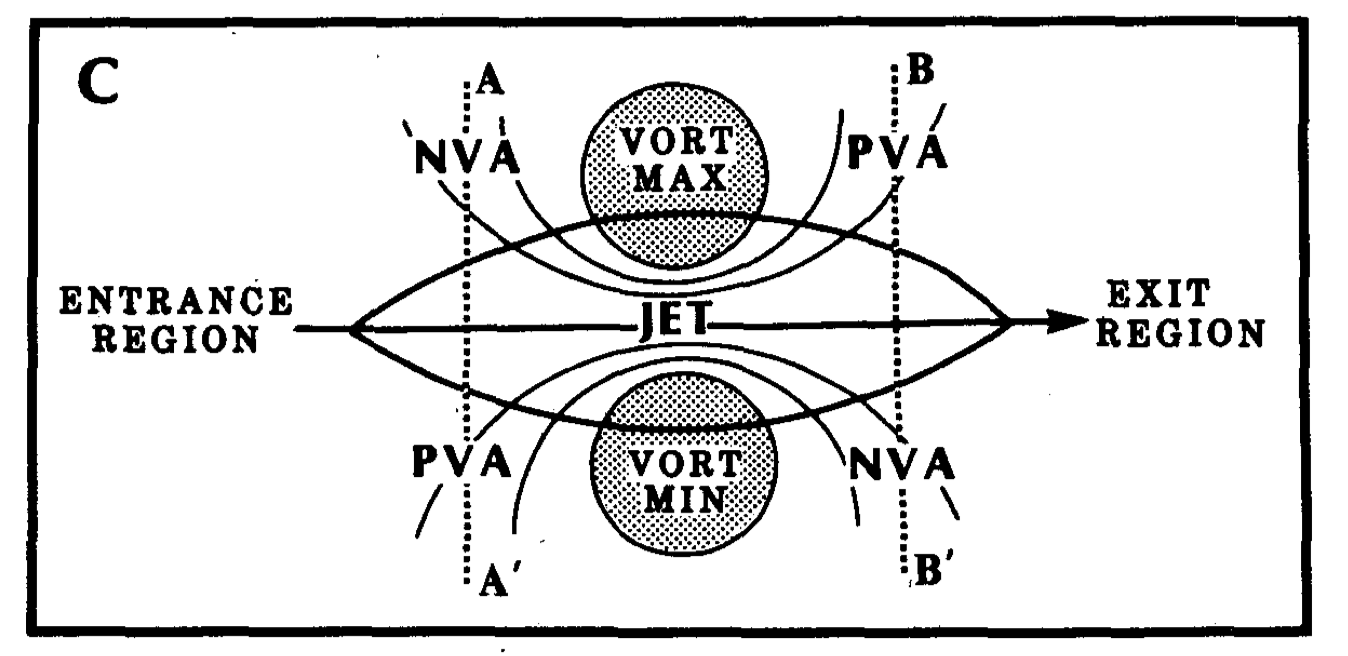
Notes
Jet streaks also have an associated vertical circulation that can be very important for precipitation – that’s beyond the scope of our short discussion here but you can read more in the Uccellini & Kocin paper or any midlatitude atmospheric dynamics textbook.
It should also be noted that for blocking to be sustained in the real atmosphere, the blocking pattern needs to be stable in the presence of other systems, which adds an additional layer of complexity. A brief review of blocking dynamics can be found in, e.g., Woolings et al. (2018).
The animations shown here have f=0, to consider the simplest possible case.
Animations made using a modified version of Geoff Vallis’ barotropic vorticity program: http://empslocal.ex.ac.uk/people/staff/gv219/codes/index.html…
The cases shown here are in terms of the Northern Hemisphere circulation. For the Southern Hemisphere, replace “north” with “poleward,” and reverse the direction of rotation (e.g., positive vorticity is clockwise rotation in the SH).
References and further reading
Haines, K. and Marshall, J., 1987. Eddy‐forced coherent structures as a prototype of atmospheric blocking. Quarterly Journal of the Royal Meteorological Society, 113(476), pp.681-704.
McWilliams, J.C., 1980. An application of equivalent modons to atmospheric blocking. Dynamics of Atmospheres and Oceans, 5(1), pp.43-66.
Nakamura, N. and Huang, C.S., 2018. Atmospheric blocking as a traffic jam in the jet stream. Science, 361(6397), pp.42-47.
Rex, D.F., 1950: Blocking action in the middle troposphere and its effect upon regional climate: I. An aerological study of blocking action. Tellus, 2, 196–211.
Uccellini, L.W. and P.J. Kocin, 1987: The Interaction of Jet Streak Circulations during Heavy Snow Events along the East Coast of the United States.Wea. Forecasting,2,289–308, https://doi.org/10.1175/1520-0434(1987)002<0289:TIOJSC>2.0.CO;2
Woollings, T., Barriopedro, D., Methven, J., Son, S.W., Martius, O., Harvey, B., Sillmann, J., Lupo, A.R. and Seneviratne, S., 2018. Blocking and its response to climate change. Current climate change reports, 4(3), pp.287-300.
Acknowledgements
This discussion is part of outreach efforts for NSF AGS-1657921.
